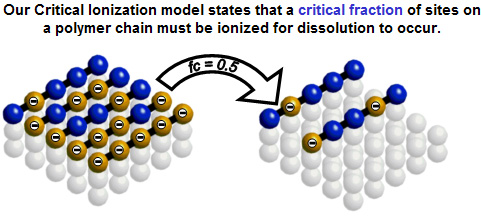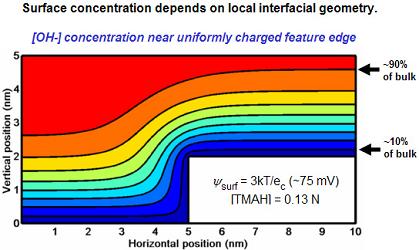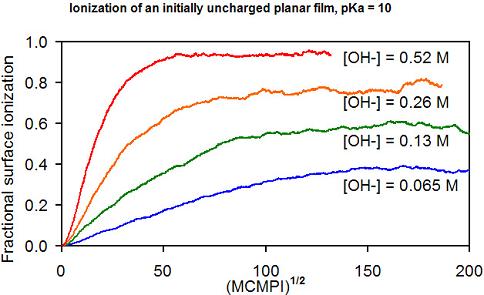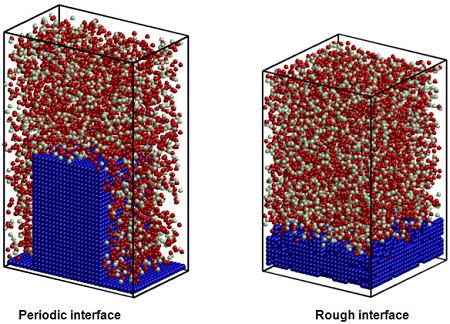Development |
|
Most positive tone photoresists are based upon acidic polymers. These systems are developed in an aqueous
solution of base (the most common developer solution is an aqueous
solution of 0.26 N tetramethylammonium hydroxide).
The dissolution of positive tone photoresists is different from the usual
concept of polymer dissolution because the species in solution (a polyion)
is different from the polymer in the film (a polyol). Chemical reactions
of the basic developer solution with acidic sites on the polymer chains
enable dissolution of the film. Our Critical Ionization (CI) model for the
dissolution of phenolic polymers in aqueous base treats photoresist
dissolution as a reaction-limited process in which a critical fraction of
repeat units on a given polymer chain must be ionized before the chain
becomes soluble in the developer solution. The input parameters to this
model are fCRIT, the critical fraction of sites on a
chain that must be ionized for dissolution to occur, and
a, the
fraction of all polymer sites exposed to developer that are ionized at
equilibrium. fCRIT is a
microscopic quantity that depends upon the chemical structure of the
polymer. a
can be calculated based upon the pKa of the resist polymer and the local
concentration of the developer solution. More details on the CI model are
provided elsewhere on this website. |
 |
Recently, calculations have predicted the formation of an electric
double layer at the resist/developer interface. As acid sites on the
polymer are ionized by the basic developer solution, a negative surface
charge accumulates. This negative charge causes an accumulation of
positive counterions, while depleting the negatively charged hydroxide
ions from the charged surface. This depletion of base can greatly affect
the dissolution process, and has been found to depend upon the local
geometry of the film/developer interface.
|
 |
|
Monte Carlo simulations of the electrostatic
double layer allow us to study the influence of variables such as ion size
and the influence of discrete surface charges. We have performed such
simulations for a variety of structures ranging from completely planar
films to roughened planar films and even to small features. Another
advantage of this technique is that it allows us to study the dynamics of
film charging after the developer is applied. |
|
Click here
to download a movie showing Monte Carlo motions of ions in the developer
near a charged polymer surface (7.2MB). |
 |
 |




